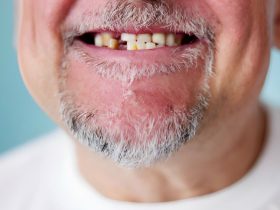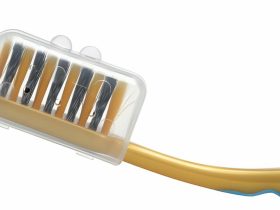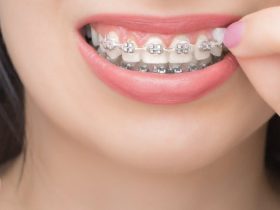
Transform Your Smile: Alveoloplasty for Perfect
Introduction
Are you experiencing discomfort or difficulty wearing dentures? Perhaps you’ve recently undergone a tooth extraction and are now concerned about the healing process. In either case, alveoloplasty might be the solution you’re looking for. Alveoloplasty is a surgical procedure performed by dental professionals to reshape the jawbone and remove irregularities or sharp edges that can cause discomfort, affect denture fit, or hinder the healing process. By smoothing and reshaping the bone, alveoloplasty can greatly improve the fit and comfort of dentures, allowing for better speech, easier chewing, and increased confidence.
With advancements in dental techniques and technology, alveoloplasty has become a safe and effective procedure with minimal discomfort and downtime. By choosing a skilled and experienced oral surgeon, you can ensure that you receive the best possible outcome. In this article, we will explore the alveoloplasty procedure in detail, discussing its benefits, recovery process, and potential risks. So, if you’re looking to enhance your denture-wearing experience or ensure optimal healing after tooth extraction, read on to learn more about alveoloplasty and how it can improve your oral health and quality of life.
What is Alveoloplasty?

Alveoloplasty is a surgical procedure performed by oral surgeons or periodontists to reshape and smooth the jawbone’s ridges after tooth extraction. The alveolar ridges are the bony structures that support the teeth, and they can develop irregularities or sharp edges over time, especially after tooth loss or extraction. These irregularities can cause discomfort, affect the fit of dentures, and impede the healing process.
During alveoloplasty, the oral surgeon uses specialized tools to remove any irregularities or sharp edges and reshape the bone to create a smoother and more even surface. This procedure is often performed in conjunction with tooth extraction or as a follow-up procedure to ensure optimal healing and denture fit. Alveoloplasty can be performed on either the upper or lower jaw, or both, depending on the patient’s needs.
The procedure is usually done under local anesthesia, ensuring that you are comfortable throughout the process. The duration of the surgery can vary depending on the complexity of the case, but it typically takes around 30 minutes to an hour. After the procedure, the surgical site is sutured, and you will be given specific aftercare instructions to promote proper healing.
Reasons for Undergoing Alveoloplasty
There are several reasons why individuals may choose to undergo alveoloplasty. Here are some common scenarios where this procedure can be beneficial:
Improved Denture Fit: If you wear dentures, you may experience discomfort or difficulty keeping them in place. Irregularities in the jawbone can cause an ill-fitting denture, leading to sore spots, difficulty chewing, and even speech problems. Alveoloplasty can help create a smooth and even ridge, allowing for a better-fitting denture that stays in place comfortably.
Optimal Healing after Tooth Extraction: After a tooth extraction, the jawbone undergoes a healing process to close the socket and regenerate new bone. However, irregularities in the bone structure can impede this process, leading to delayed healing or complications. Alveoloplasty can help remove any obstacles to proper healing, ensuring that the regeneration of bone occurs smoothly and without complications.
Enhanced Aesthetic Appearance: In some cases, the shape of the jawbone can affect the overall appearance of the face. Irregularities or asymmetry in the jawbone can create an unbalanced facial profile. By reshaping the bone through alveoloplasty, oral surgeons can help improve the aesthetic appearance of the jawline, resulting in a more harmonious facial structure.
Preparing for Alveoloplasty Surgery

Before undergoing alveoloplasty surgery, it is important to consult with an experienced oral surgeon who will evaluate your oral health and determine if you are a suitable candidate for the procedure. During your consultation, the oral surgeon will take X-rays or perform a CT scan to assess the condition of your jawbone and identify any potential complications.
It is essential to provide your oral surgeon with a complete medical history, including any medications you are currently taking and any underlying health conditions. Certain medications, such as blood thinners, may need to be temporarily discontinued before the surgery to minimize the risk of bleeding during the procedure. Your oral surgeon will provide you with specific instructions on how to prepare for the surgery, including any dietary restrictions and guidelines for fasting before the procedure.
Additionally, you should arrange for someone to accompany you to the clinic on the day of the surgery, as you may not be able to drive yourself home afterward. This is especially important if general anesthesia will be used during the procedure, as it can take some time for the effects to wear off.
The Alveoloplasty Procedure
The alveoloplasty procedure is typically performed under local anesthesia, although general anesthesia may be used for more complex cases or for patients who experience anxiety during dental procedures. Before the surgery begins, the oral surgeon will ensure that the anesthesia has taken effect and that you are comfortable throughout the procedure.
Once you are numb, the oral surgeon will make incisions in the gum tissue to access the underlying jawbone. Using specialized tools, they will then carefully remove any irregularities or sharp edges and reshape the bone to create a smooth and even surface. The surgeon will take care to preserve the integrity of the surrounding structures and ensure that the bone is reshaped in a way that enhances denture fit and promotes proper healing.
After the bone has been reshaped, the surgeon will thoroughly clean the surgical site and suture the incisions. The sutures used may be self-dissolving or may need to be removed during a follow-up appointment. The surgeon will provide you with detailed aftercare instructions, including guidelines for oral hygiene, dietary restrictions, and any necessary pain management.
Recovery and Aftercare for Alveoloplasty

After alveoloplasty surgery, it is normal to experience some swelling, discomfort, and minor bleeding. These symptoms can be managed with prescribed pain medication and ice packs to reduce swelling. It is important to follow the oral surgeon’s instructions regarding pain management and take any prescribed medications as directed.
To promote optimal healing, it is essential to maintain good oral hygiene. This includes gently brushing your teeth and the surgical area with a soft-bristle toothbrush, and being cautious not to irritate the incisions. Additionally, you may be advised to rinse your mouth with a saltwater solution or an antimicrobial mouthwash to keep the surgical site clean and minimize the risk of infection.
It is crucial to follow a soft-food diet for the first few days after surgery, gradually reintroducing solid foods as advised by your oral surgeon. Avoiding hard, sticky, or crunchy foods can help prevent any damage to the surgical site and aid in the healing process. It is also important to avoid smoking and drinking alcohol during the recovery period, as these habits can impede the healing process and increase the risk of complications.
During the recovery period, it is normal to have follow-up appointments with your oral surgeon to monitor the healing progress and ensure that there are no complications. If you experience severe pain, excessive bleeding, or any other concerning symptoms, it is crucial to contact your oral surgeon immediately.
Risks and Complications of Alveoloplasty
Like any surgical procedure, alveoloplasty carries some risks and potential complications. While these occurrences are rare, it is important to be aware of them before undergoing the surgery. Some potential risks include
Bleeding: Some bleeding is normal after surgery, but excessive or prolonged bleeding may require medical attention. Your oral surgeon will provide you with guidelines on how to manage bleeding at home and when to seek professional help.
Infection: Infection is a potential risk with any surgical procedure. To minimize the risk, it is crucial to follow the aftercare instructions provided by your oral surgeon, including proper oral hygiene, dietary restrictions, and avoiding smoking or alcohol consumption.
Alveoloplasty vs. Other Dental Procedures

is a specific surgical procedure tailored to reshape the jawbone and remove irregularities or sharp edges. However, other dental procedures may be recommended depending on your specific oral health needs. Here are some common dental procedures and how they compare to alveoloplasty:
Extraction Only: Tooth extraction alone may be sufficient if there are no significant irregularities or sharp edges in the jawbone. However, if there are any concerns regarding the healing process or denture fit, alveoloplasty may be recommended as a follow-up procedure.
Bone Grafting: Bone grafting is a procedure that involves adding bone material to the jawbone to enhance its volume or density. It is often performed to prepare the jawbone for dental implant placement. Alveoloplasty, on the other hand, focuses on reshaping the existing bone rather than adding new bone material.
Cost of Alveoloplasty and Insurance Coverage
The cost of alveoloplasty can vary depending on various factors, including the complexity of the case, the geographic location, and the expertise of the oral surgeon. It is best to consult with your oral surgeon to get an accurate estimate of the cost based on your specific needs.
Insurance coverage for alveoloplasty can also vary depending on your insurance provider and policy. Some dental insurance plans may cover a portion of the cost, while others may consider it a cosmetic procedure and provide limited or no coverage. It is recommended to contact your insurance provider to understand your coverage options and any out-of-pocket expenses you may incur.
Conclusion
Alveoloplasty is a surgical procedure that can greatly improve the fit and comfort of dentures and promote optimal healing after tooth extraction. By reshaping the jawbone and removing irregularities or sharp edges, alveoloplasty enhances denture stability, allows for better speech and easier chewing, and increases overall confidence. With advancements in dental techniques and technology, alveoloplasty has become a safe and effective procedure with minimal discomfort and downtime.
If you are experiencing discomfort or difficulty wearing dentures or have concerns about the healing process after tooth extraction, alveoloplasty may be the solution you’re looking for. By consulting with an experienced oral surgeon, you can explore the benefits, risks, and recovery process associated with alveoloplasty. Together, you can determine if this procedure is the right choice for improving your oral health and quality of life.
People also ask
Alveoloplasty is a surgical procedure aimed at reshaping the jawbone, commonly performed to prepare for dental prosthetics like dentures or implants.
While not always required, alveoloplasty may be recommended if irregularities in the jawbone could affect the fit or comfort of dentures.
Alveoloplasty, also known as ridge augmentation, involves reshaping the alveolar ridge to create a smoother surface for dental appliances.
Patients may experience some discomfort during or after alveoloplasty, but pain is typically managed with medication and resolves as the area heals.
While discomfort is possible, advancements in dental techniques and anesthesia have made alveoloplasty a relatively pain-free procedure.
The duration of alveoloplasty varies depending on the complexity of the case but typically lasts between 30 minutes to an hour.












Leave a Reply